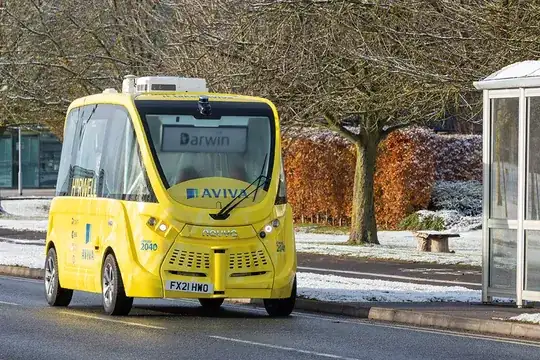My understanding is that if one has a collision with another vehicle in which the other driver is at fault then you can sue the other driver for the loss incurred. If the other driver was employed by a company and driving a vehicle owned by that company then that company is likely to pick up the bill, but the suit would be directed at the individual in the first case. This would be the case whether the collision occurred on private or public land.
There is currently a fully autonomous shuttle driving around a privately owned campus in the UK. It has a habit of starting off after picking up passengers while it is being overtaken, in a way that is contrary to the highway code guidance. I think a human driver would be at fault if they drove in this manner.
I think this vehicle is owned by a French company, operating under a contract with the owner of the campus and supported by multiple organizations on and off site. It is insured and heavily sponsored by Aviva such that this is the prime company one would associate with the vehicle from viewing it.
If one had a collision with this vehicle in a way that a human driver of that vehicle would be at fault, who should one sue?
